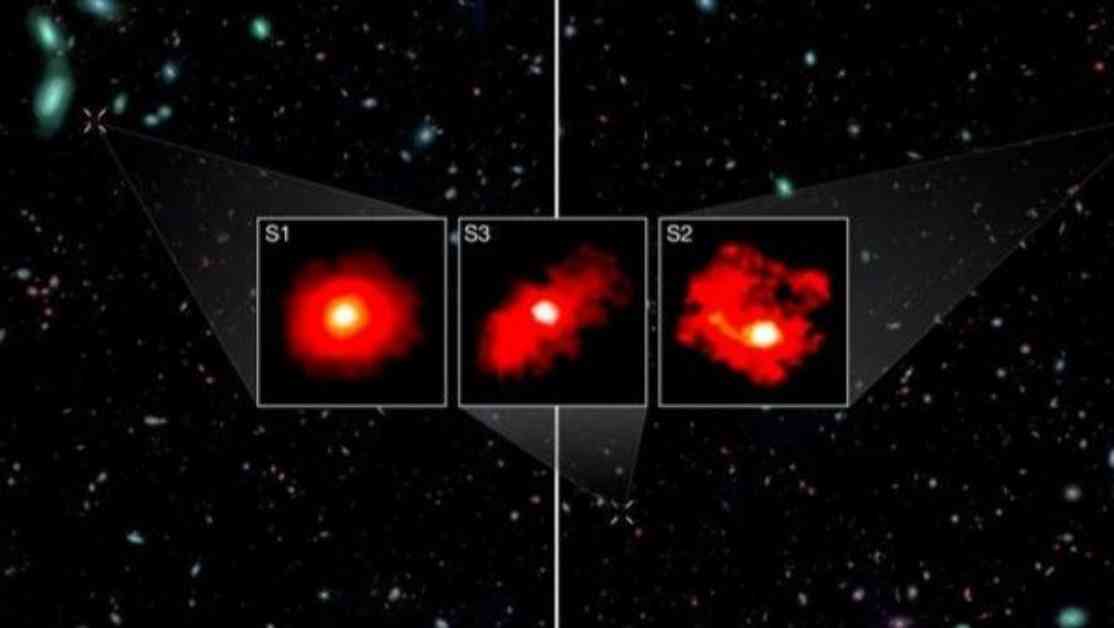The James Webb Space Telescope (JWST) recently made a significant discovery in the early universe by identifying three massive “red monster” galaxies. These galaxies, each 100 billion times the mass of our sun, were formed over 12.8 billion years ago, shortly after the Big Bang.
What makes these galaxies so intriguing is the speed at which they formed stars. Current models of galaxy formation suggest that the process is fairly inefficient, with only about 20% of gas converting into stars. However, the red monsters seem to have defied these odds, with up to 80% of their gas being transformed into bright young stars.
This discovery challenges existing theories in astronomy and raises questions about how galaxies evolve in the early universe. Researchers believe that further observations of these galaxies using advanced telescopes like the JWST and ALMA will provide valuable insights into the conditions of the early universe.
The JWST’s infrared capabilities have allowed scientists to study these galaxies in more depth than ever before, offering a new perspective on the earliest epochs of the universe. This groundbreaking discovery marks the beginning of a new era in our exploration of the cosmos.
As we continue to delve into the mysteries of the universe, the JWST will undoubtedly uncover more surprises and curveballs that challenge our current understanding of the cosmos. This remarkable telescope has already demonstrated its ability to push the boundaries of our knowledge and shed light on the rapid evolution of galaxies in the early universe.










